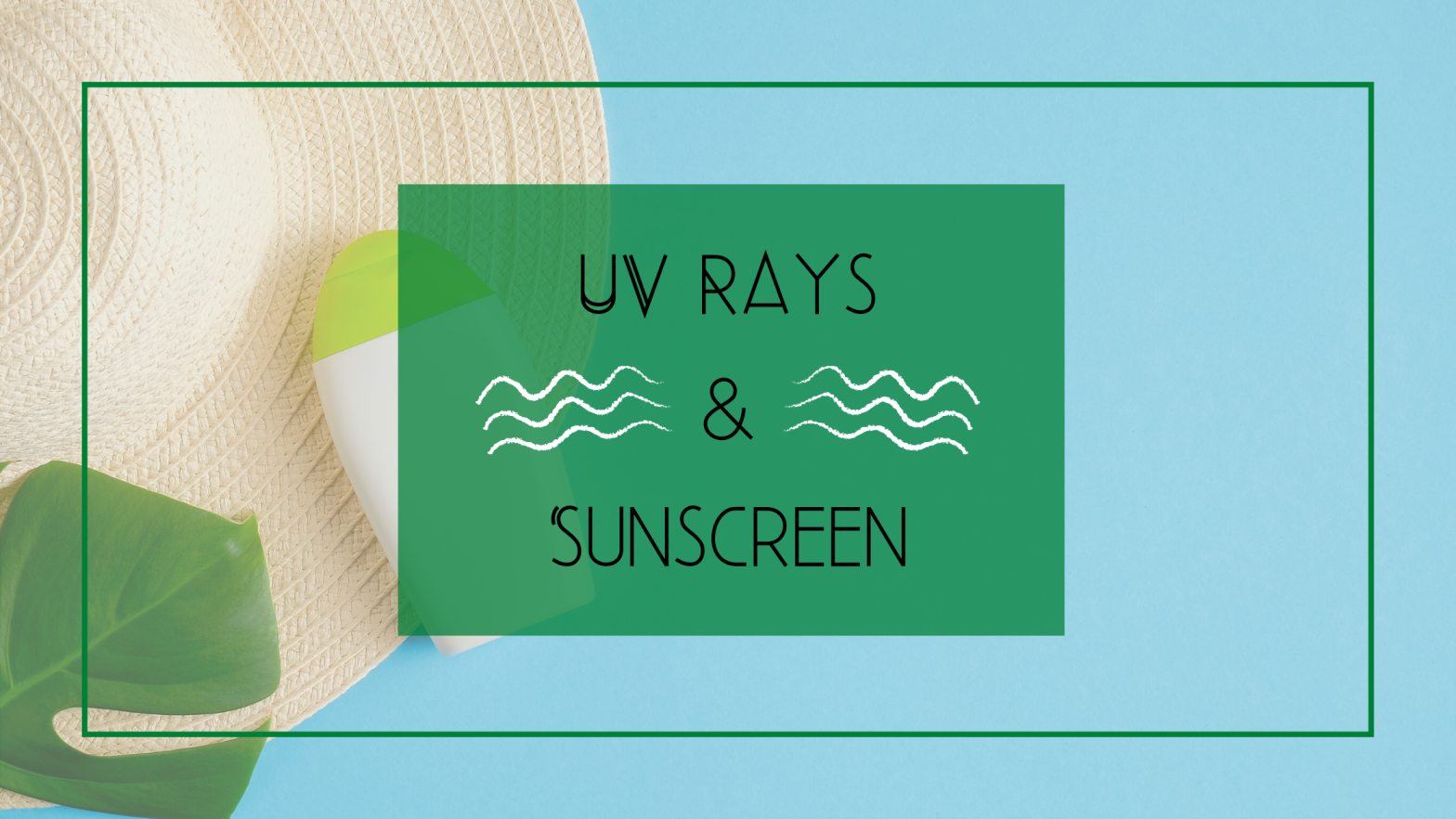Disclaimer: Though I strive to do my best in providing information that is thoroughly researched, I am not an expert or professional in the skincare or healthcare industry. I am simply an enthusiast who enjoys all aspects of skincare. Always seek the advice of your physician, a board-certified dermatologist or licensed esthetician for any concerns.
Did you know that your skin makes up roughly 16% of your body mass, making it the largest organ in your body? Also referred to as the integumentary system, the skin serves several functions, including regulating body temperature, moisture, and is the body’s primary barrier against pathogens, UV light, and injury.
Ultraviolet light, a form of electromagnetic radiation, poses numerous health risks. It is crucial to protect our skin every day to keep it healthy so it can keep us healthy, and the primary way to do this is by wearing sunscreen regularly.
What is Ultraviolet Light?
Ultraviolet light, or UV light, is a form of electromagnetic radiation with wavelengths shorter than visible light. The primary source of UV radiation is the Sun, but it can come from human-made sources, such as tanning beds, welding torches, and UV sanitizing lamps. UV light has three subtypes: UVA, UVB, and UVC.
UVA has a longer wavelength and the least amount of energy of the three. It can penetrate deeper into the skin’s dermis and is the primary form of UV responsible for premature skin aging due to sun exposure or photoaging. It can exert an indirect effect on cell DNA.
UVB has slightly more energy than UVA and can exert a more direct effect on cells, damaging their DNA and causing sunburns. It is believed that UVB contributes to most forms of skin cancer.
UVC is the most energetic of the three forms of UV. It reacts with ozone high in the atmosphere and doesn’t reach Earth’s surface; however, some human-made technologies such as arc welders produce UVC rays.
How Does UV radiation affect the skin?
Classified as a “complete carcinogen,” UV exposure has numerous negative impacts on the skin. The three most common types of skin cancer are linked to UV: basal cell carcinoma, squamous cell carcinoma, and malignant melanoma.
UV rays are capable of directly affecting nucleotide base pairing in DNA, resulting in abnormal bonds that alter the structure of the double helix. These alterations are termed “photolesions,” and on any given day of sun exposure, an estimated 100,000 UV-induced photolesions per skin cell can result. These photolesions can ultimately lead to cancer.
Skin cancer is among the most common forms of cancer and will affect 1 in every 5 Americans throughout their lifetime. It is estimated the UV is the cause for nearly 65% of melanoma cases and 90% of non-melanoma skin cancers.
UV radiation also contributes to premature aging of the skin due to sun exposure, termed “photoaging.” UVA rays, in particular with their longer wavelength, penetrate the dermis where they damage collagen fibers. Over time this contributes to an abnormal elastin production and results in wrinkles, fine lines, actinic keratosis, post-inflammatory hyperpigmentation, among other concerns.
What is sunscreen?
Sunscreen is a topical product formulated with active ingredients that absorb or reflect the Sun’s UV rays to prevent sunburn, skin cancer, and photoaging. These ingredients include physical filters, such as zinc oxide and titanium dioxide, and chemical filters, such as avobenzone and octinoxate.
Physical filters work by reflecting and scattering UV rays before they reach your skin while chemical filters work by absorbing UV rays and converting them to heat before they cause damage to your skin.
There are several varieties of sunscreens. Mineral sunscreens contain only physical filters, chemical sunscreens contain only chemical filters, and combination sunscreens contain both. A range of formulations exists for different skin concerns, including fragrance-free, sensitive skin, and acne-prone skin.
SPF means “sun protection factor” and refers to a relative measure of how long the sunscreen will protect you from UVB rays in contrast to unprotected skin. For example, a sunscreen with an SPF of 50 will protect you against UVB 50 times longer than if you were to go without sunscreen.
Regularly wearing sunscreen reduces your risk of developing squamous cell carcinoma by 40% and melanoma by 50%, according to The Skin Cancer Foundation.
How do I apply sunscreen?
It’s best to choose a sunscreen with at least SPF15 or SPF30 or above if you’re spending the day outdoors. The average adult doesn’t apply enough sunscreen, and most people only use between 20% to 50% of the amount they should. You should use roughly 1 ounce — one shot glass — of sunscreen over your entire body on all exposed areas. Remember to include the tops of your feet, back of your neck and knees, scalp, and ears. You should apply 30 minutes before sun exposure and reapply every two hours or every 40-80 minutes if you’re swimming or sweating.
What about when it’s cloudy?
Yes, even when it’s cloudy. 80% of the Sun’s UV rays still reach Earth on overcast days, putting you at risk for skin damage if you go unprotected.
What about tanning?
Tanning is part of the skin’s inflammatory response to UV exposure, similar to sunburns. Prolonged UV exposure causes cells in your epidermis called keratinocytes to trigger a programmed cell death response (called “apoptosis”). Thickening of the epidermis follows this and is accompanied by adaptive melanization or tanning.
Artificial tanning also increases your lifetime risk of melanoma by 75% when practiced before the age of 35.
Doesn’t wearing sunscreen cause vitamin D deficiency?
There is no substantiated evidence to support the claim that wearing sunscreen promotes vitamin D deficiency, and while wearing sunscreen blocks a majority of UV rays, a small percentage still make it through even the highest SPF. You can also obtain vitamin D from several dietary sources, including eggs, fish, and fortified dairy and cereals. If you’re concerned about vitamin D deficiency, always discuss health matters with your physician or nutritionist.
I don’t have to wear it during the winter though, right?
You do. The Sun’s UVA rays are consistent throughout the year and still pose an exposure risk during the winter. Snow is a particularly good reflector of UV rays and exposes you to double the amount of UV.
Making sunscreen a part of your routine is a critical way to protect your skin. It reduces your risk of developing skin cancer, protects against skin damage and sunburn, and prevents premature skin aging or photoaging. Different formulations exist, making it easy for you to find one that suits your skin type and needs. Your skin is the largest organ in your body — if you take care of it, it will take care of you.
References
D’Orazio, John et al. “UV radiation and the skin.” International journal of molecular sciences vol. 14,6 12222-48. 7 Jun. 2013, doi:10.3390/ijms140612222. https://www.ncbi.nlm.nih.gov/pmc/articles/PMC3709783/. Accessed June 24, 2020.
McNeill, Ann Marie, and Erin Wesner. “Sun Protection and Vitamin D.” The Skin Cancer Foundation, 14 May 2018, https://www.skincancer.org/blog/sun-protection-and-vitamin-d/. Accessed June 25, 2020.
Neale RE, Khan SR, Lucas RM, Waterhouse M, Whiteman DC, Olsen CM. The effect of sunscreen on vitamin D: a review. Br J Dermatol. 2019;181(5):907-915. doi:10.1111/bjd.17980 https://onlinelibrary.wiley.com/doi/full/10.1111/bjd.17980. Accessed June 25, 2020.
Richard, Elisabeth G. “All About Sunscreen.” The Skin Cancer Foundation, 1 June 2019, https://www.skincancer.org/skin-cancer-prevention/sun-protection/sunscreen/. Accessed June 24, 2020.
Science Mission Directorate. “Ultraviolet Waves” NASA Science. 2010. National Aeronautics and Space Administration. http://science.nasa.gov/ems/10_ultravioletwaves. Accessed June 24, 2020.
“Sunscreen FAQs.” American Academy of Dermatology, 1 June 2019, https://www.aad.org/public/everyday-care/sun-protection/sunscreen-patients/sunscreen-faqs. Accessed June 24, 2020.
“Ultraviolet (UV) Radiation.” American Cancer Society, 10 July 2019, https://www.cancer.org/cancer/cancer-causes/radiation-exposure/uv-radiation.html#references. Accessed June 25, 2020.
“Ultraviolet (UV) Radiation.” World Health Organization, 9 Mar. 2016, https://www.who.int/news-room/q-a-detail/ultraviolet-(uv)-radiation. Accessed June 25, 2020.

